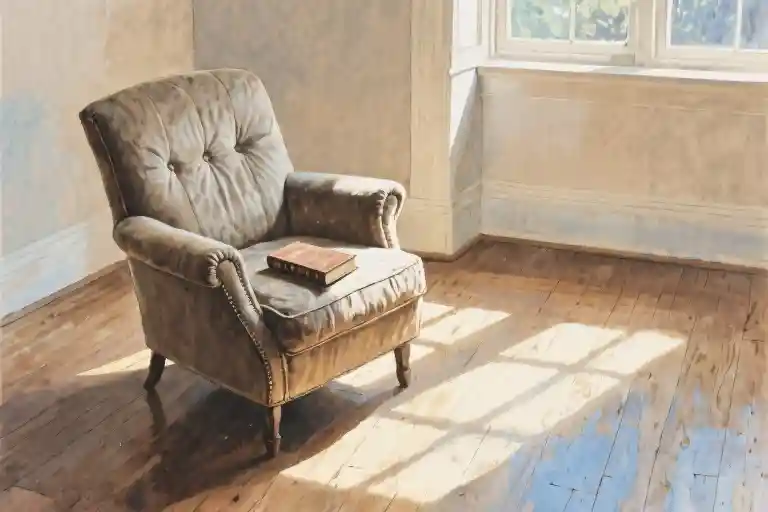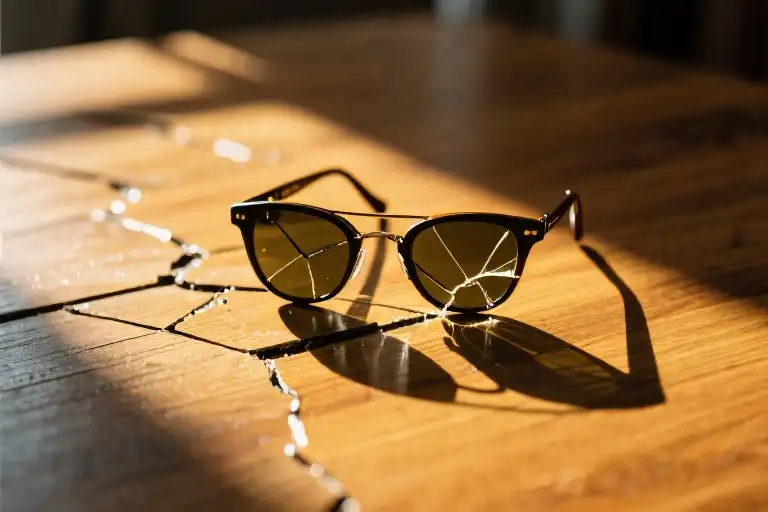Five weeks since my father’s death, I still reach for the phone to tell him about my day. The muscle memory of dialing his number lingers longer than the rational thought that reminds me he’ll never pick up again. He was both my anchor and the source of storms—a man who taught me to change tires with the same intensity he used to criticize my life choices. Now the silence where his voice should be feels like walking through a familiar room with all the furniture rearranged.
Complicated grief after a parent’s death doesn’t announce itself with dramatic outbursts. It slips in through the backdoor of ordinary moments: when I pass the hardware aisle where he’d lecture about wrench sizes, or when the evening news mentions politics and my fingers twitch to text him. The hospital’s final call plays on loop in my mind—that clinical voice saying “We can’t proceed with dialysis today” as if discussing a canceled meeting rather than the end of a life sustained for nine years by machines.
Who am I now that ‘daughter’ is a word without a living target? The question hovers like the smell of antiseptic in his nursing home room. For forty-three years that identity came with scripts—birthday cards to sign, Father’s Day brunches to arrange, medical forms to decipher. Without him here to perform for, to argue with, to quietly impress, I’m left holding the empty container of that relationship, still heavy with all we never said.
The bedsores they found during his last admission weren’t part of our story. Not really. Those angry red ulcers spoke of a different narrative—one about elderly care systems where underpaid staff miss early warning signs, about bodies betraying their owners one cell layer at a time. I’d give anything to unsee the way his skin had begun dissolving into the mattress, though the guilt of not noticing sooner might outlast even this fresh grief.
Some losses rearrange your bones. This one carved out spaces I didn’t know existed—hollows where his opinions used to live, cavities shaped like his laughter during bad puns. The supermarket feels dangerous now; I keep catching glimpses of his favorite shortbread cookies in the bakery aisle. Next week would have been his seventy-eighth birthday. The calendar mocks me with its ordinary squares.
The Weight of Absence
Five weeks have passed since the hospital called about my father’s death, yet my fingers still hover over his contact in my phone every Thursday evening. That was our designated call time, a ritual maintained through nine years of his dialysis treatments and four years of nursing home confinement. The muscle memory of grief surprises me most – how my body remembers what my mind struggles to accept.
In the cereal aisle last Sunday, I caught myself reaching for the bran flakes he preferred, the ones I always teased him about tasting like cardboard. The box felt foreign in my hand, yet putting it back required conscious effort. These mundane moments carry the sharpest reminders of absence. Psychologists call this ‘searching behavior,’ those automatic actions when our brains temporarily forget a loved one is gone. The term feels too clinical for the way my throat tightens when I see his favorite peppermints at checkout counters.
Our relationship defied simple labels. He could be dismissive one visit, unexpectedly sentimental the next. The man who forgot my college graduation once drove through a snowstorm to bring chicken soup when I had the flu. This inconsistency created what attachment theorists describe as ‘complicated grief’ – the peculiar pain of mourning someone who was both your anchor and the source of storms. The duality makes the mourning process uneven, like walking on terrain that keeps shifting beneath your feet.
What unsettles me most isn’t the sadness, but the quiet existential question that follows me like a shadow: Who am I now that ‘daughter’ no longer has a living recipient? For fifty-three years, that identity came with active responsibilities – birthday cards to send, doctor’s appointments to coordinate, his favorite crossword puzzles to clip from the newspaper. These small acts created invisible threads between us, even during our strained periods. Their sudden irrelevance leaves me untethered.
Research from the Center for Complicated Grief at Columbia University shows this identity disruption is common. Their studies found that adults who lose parents often describe feeling like ‘orphans,’ regardless of their age. The term startled me at first – I’m a grandmother myself – but I recognize the visceral truth in it. There’s something profoundly disorienting about becoming the oldest living generation in your family tree.
My father’s recliner still sits in its corner by the window, the leather worn smooth where his head rested. I run my hand over the indentation sometimes, not out of sadness exactly, but to confirm the physical evidence of his existence. The tactile memory seems more reliable than my shifting emotions these days. Grief specialists would call this ‘continuing bonds,’ the ways we maintain connections beyond death. I find unexpected comfort in knowing this impulse is normal, that the chair might always feel like his in some small way.
What surprises me is how grief manifests in my senses before my thoughts. The scent of his aftershave on a stranger. The particular squeak of hospital shoes on linoleum. The way the light falls across the kitchen table at 3pm, the hour he always preferred for coffee. These sensory memories arrive unannounced, vivid and disorienting as a suddenly remembered dream. Neurologists explain this phenomenon through the amygdala’s role in emotional memory – the body’s alarm system that records traumatic events with heightened clarity. Knowledge doesn’t soften the impact, but it helps me feel less alone when the world seems saturated with unexpected reminders.
The mourning process feels less like stages and more like weather patterns – some days are clear and manageable, others bring sudden squalls of emotion. On difficult mornings, I reread the last birthday card he sent me, its message characteristically brief but signed ‘Love, Dad’ in his precise architect’s handwriting. The card represents our relationship perfectly: not what I might have wished for, but containing just enough to sustain me.
The Hospital Call
The voice on the phone had that particular blend of clinical detachment and practiced sympathy that only comes from delivering bad news too often. “We can’t proceed with dialysis today” — twelve syllables that unraveled nine years of carefully maintained routine. Outside my kitchen window, a squirrel froze mid-step on the fence, as if the universe itself paused to mark the moment medical bureaucracy collided with my crumbling world.
The Anatomy of a Misdiagnosis
What began as routine monitoring for rectal bleeding at the nursing home had spiraled into something far more sinister. The hospital’s initial report—typed in that impersonal Times New Roman font they use for all official documents—listed “suspected gastrointestinal hemorrhage” as the admitting diagnosis. It wasn’t until Day 3 that a junior resident noticed the necrotic tissue on his lower back during a turn check. By then, the Stage 4 pressure ulcer had tunneled deep enough to expose bone, its edges weeping the same burgundy fluid they’d mistaken for intestinal bleeding.
I learned later that bedsores kill nearly 60,000 Americans annually, according to CDC data. The numbers don’t capture how it happens—not the dramatic crash of a heart attack, but the slow creep of cellular starvation as compressed tissue suffocates under unrelieved pressure. My father, who’d survived nearly a decade on dialysis, was ultimately defeated by something as mundane as inadequate turning schedules.
The Last Conversation We Never Had
“His blood pressure’s too low for treatment”, the nephrologist explained, her voice tinny through my phone speaker. Somewhere in the background, I heard the rhythmic beep of a cardiac monitor keeping time like a morbid metronome. They’d tried albumin infusions, Trendelenburg positioning, even off-label Midodrine—all the tricks in their playbook to boost perfusion pressure enough for the dialysis machine’s demands.
What stays with me isn’t the medical jargon, but the ordinary details surrounding that call. The way my coffee had gone cold in the “World’s Best Daughter” mug my kids gave me last Christmas. The half-peeled banana on the counter, its flesh browning at the edges like the necrosis spreading across my father’s skin. Grief has a way of branding these trivialities into memory with surreal clarity.
The Paper Trail of Loss
The discharge summary arrived in my inbox three days post-mortem, a PDF that reduced my father’s final weeks to bullet points:
- 02/14: Admitted for presumed GI bleed
- *02/17: ID consult for sacral wound, MRSA+
- 02/28: Palliative care discussion initiated
Medical records have a peculiar cruelty—they document decline with brutal efficiency yet erase all evidence of the person behind the chart. Nowhere does it mention how he’d hum show tunes during dialysis, or that he refused strawberry Ensure because it reminded him of childhood medicine. The bureaucracy of dying leaves no space for these essential truths.
The Questions That Remain
Would earlier wound care have changed the outcome? Could more frequent repositioning have prevented the sepsis that clouded his final days? These “what if” scenarios play on loop during my 3 AM wakefulness, that witching hour when regrets grow teeth. The hospital’s patient advocate later shared sobering statistics—nearly 25% of long-term care residents develop preventable pressure injuries. Yet knowing the systemic nature of the problem doesn’t ease the particular ache of my father’s suffering.
Sometimes I trace the indentation left by the hospital bracelet they cut from his wrist, its plastic teeth still sharp enough to draw blood if pressed too hard. A tangible reminder that even the cleanest medical endings leave ragged edges.
The Unseen Battle
The morning light slanted through the hospital curtains when the resident used the term “Stage 4” about the wound on my father’s lower back. Until that moment, I’d imagined bedsores as minor skin irritations—the kind you slap a bandage on and forget. The reality was a crater exposing bone, a physical manifestation of nine years of dialysis and four years of nursing home immobility that no one had thought to warn me about.
When Skin Becomes a Battlefield
Bedsores don’t announce their arrival. They begin as persistent redness (Stage 1), the kind you might mistake for a mild rash. By Stage 2, the skin breaks open like overripe fruit, revealing a shallow ulcer. At Stage 3, the wound tunnels downward through fat layers. What finally killed my father was Stage 4—where tissue necrosis reaches muscle or bone, creating a gateway for systemic infection. The CDC estimates 60,000 annual deaths from pressure ulcer complications, yet most families remain unaware until crisis strikes.
Three preventable factors accelerated my father’s decline:
- The turning gap: Nursing homes ideally reposition patients every 2 hours, but understaffing often stretches this to 4-6 hours—plenty of time for pressure to cut off blood flow to vulnerable areas like the tailbone or heels.
- Nutritional oversight: Protein deficiency weakens skin resilience. Despite my father’s albumin levels dipping dangerously low, his meal plans weren’t adjusted until wounds appeared.
- Early warning blindness: Family members rarely check the sacral region (between the lower back and buttocks), where 70% of bedsores develop. I learned too late that a simple hand mirror could have revealed the problem months sooner.
Five Checks Every Caregiver Should Know
After reviewing dozens of medical reports and interviewing wound care specialists, these actionable steps emerged as critical:
- The 30° rule: When propping someone on their side, use pillows to maintain a 30-degree tilt. This reduces shear force better than full 90-degree positions.
- The breakfast test: Run your hand under their mattress each morning. If you feel prominent springs or uneven padding, pressure redistribution isn’t adequate.
- The protein pivot: Demand weekly albumin level checks. Levels below 3.5 g/dL require immediate dietary intervention—think Greek yogurt instead of pudding, scrambled eggs instead of toast.
- The moisture meter: Skin maceration from sweat or incontinence accelerates breakdown. A $12 hygrometer from any hardware store can monitor humidity levels in bedding.
- The mirror method: During visits, gently check bony prominences with a compact mirror. Look for persistent redness that doesn’t blanch when pressed—the earliest warning sign.
What haunts me most isn’t just that my father died from bedsores, but that each stage offered opportunities to intervene. The nurse who finally showed me his wounds said something that reshaped my guilt: “These aren’t failures of love, but of systems.” She was right—I’d have moved mountains to ease his pain if I’d known what to look for. Now I tell everyone caring for an immobilized loved one: the skin speaks long before the crisis comes. Learn its language.
Carrying the Complicated
When the hospital social worker handed me my father’s belongings in a clear plastic bag—his cracked reading glasses, a half-empty tube of denture adhesive, three peppermint candies wrapped in pharmacy receipts—I felt the weight of every unresolved conversation we’d never have. The candies were the same kind he’d offered during our last strained visit, when we’d argued about politics instead of saying the things that mattered. Now they sat in my palm like tiny landmines of memory.
The Letters We Never Sent
A structural engineer named Robert wrote to me after reading about my experience. For seven years after his father’s death, he’d kept a shoebox of unsent letters beneath his bed—pages filled with accusations about childhood neglect, followed by clumsy apologies for not visiting more during the hospice days. Last winter, he took them to the rocky beach where they’d once skipped stones together and read each one aloud before burning them in a driftwood fire. ‘The tide took the ashes before I could second-guess myself,’ he said. What stayed with him wasn’t the dramatic gesture but the ordinary moment that followed: making his father’s favorite peanut butter sandwich with the crusts cut off, something he hadn’t done since he was nine.
This is the alchemy of complicated grief—turning the leaden weight of ‘what if’ into small, bearable moments of connection. The psychologist Teresa Rando’s research on ‘ambiguous loss’ shows that relationships marked by conflict or abandonment often require specific rituals to process. Unlike clean-cut sorrow, these losses come with emotional static—love and resentment playing through the same old arguments like a scratched record.
The Contradiction Journal
During my first therapy session after the funeral, my counselor slid across a worksheet titled ‘Hold Both.’ At the top were two columns: ‘What Hurt’ and ‘What Held.’ Below, blank lines waited for my messy truths. I stared at it for days before writing:
What Hurt
- The way he mocked my writing dreams at Thanksgiving 2007
- Never saying ‘I’m proud of you’ even when I published my first book
What Held
- How he saved every school report card in a leather binder
- Driving 300 miles to fix my leaky sink when I was broke and pregnant
Keeping this journal taught me that love and disappointment aren’t opposites—they’re neighbors in the same crowded heart. Some entries looked like this:
Date: March 12
Situation: Saw his favorite whiskey at the liquor store
Anger: 4/10 (He chose drinking over my graduation)
Longing: 8/10 (Miss his terrible jokes)
Action: Bought mini bottle, poured it on his rosebush
The Permission Slip
What surprised me most was discovering pockets of relief beneath the guilt. When my cousin mentioned Dad’s habit of correcting people’s grammar at funerals, I laughed so hard I choked on my coffee—the first real laughter since his death. Later, I cried from shame at finding joy. My therapist called this ‘the double lock’ of complicated grief: punishing ourselves for both the negative feelings and any positive ones that break through.
Here’s what helps: a literal permission slip. Mine lives in my wallet, frayed at the edges:
I, __, grant myself full rights to:
- Remember the bad without erasing the good
- Miss him and still feel angry
- Laugh at his flaws while honoring his struggles
- Grieve in whatever way comes, without timetable
Signed:
Date:
Every anniversary, I rewrite it. The act of physically signing makes the abstract concrete—a contract with my shifting self.
The Living Legacy
Now when someone asks ‘What was your father like?’ I’ve stopped editing. Instead of the sanitized version (‘He was a tough but kind man’), I might say: ‘He could name every constellation but couldn’t say ‘I love you.’ He taught me to change a tire but never apologized.’ The reactions vary—some uncomfortable silences, but more often nods of recognition. These honest exchanges have become my unexpected inheritance: helping others carry their own complicated bundles of love and loss.
In my nightstand drawer, the denture adhesive tube remains unopened. Sometimes I unscrew the cap just to smell the medicinal mint—a scent that somehow holds all of it—the arguments, the silent car rides, the rare hand on my shoulder when I got my college acceptance letter. The complicated truth, it turns out, fits perfectly in the palm of my hand.
Closing the Circle
The tulip bulbs felt cold and gritty in my palms as I knelt in what used to be my father’s favorite corner of the garden. He’d always hated tulips—called them ‘flamboyant weeds’—which made planting them there feel like both a quiet rebellion and the strangest tribute. Five weeks after his death, I’m learning that grief isn’t about severing ties but rearranging them.
The Language of Continuing Bonds
Modern grief psychology has moved beyond the idea of ‘closure.’ Researchers like Dennis Klass and Phyllis Silverman speak of ‘continuing bonds’—the understanding that relationships transform rather than disappear. That corner of my garden has become what therapist Pauline Boss would call an ‘ambiguous space,’ where I can simultaneously acknowledge the complicated history and create new meaning.
For those navigating similar terrain, consider these pathways:
- Symbolic gestures: Like my tulips, choose an action that honors both the love and the complexity (planting disliked flowers, framing a childhood photo alongside an unsent letter)
- Conversational writing: Set aside ten minutes weekly to ‘update’ your parent on your life, allowing the relationship to evolve posthumously
- Legacy projects: Compile their recipes with your annotations, or volunteer for causes they’d oppose—affirming your separate identity
Practical Resources for the Journey
When the emotional work feels overwhelming, these tools can provide scaffolding:
- Grief support networks:
- The Compassionate Friends (for loss of parents)
- Refuge in Grief online communities
- Medical advocacy guides:
- Bed Sore Prevention Handbook from NHS Scotland
- The AHRQ’s Checklist for Family Caregivers
- Therapeutic exercises:
- The ‘Two-Chair Dialogue’ worksheet from Psychology Tools
- ‘Grief Mapping’ templates from What’s Your Grief
The Unfinished Conversation
What no one tells you about losing a parent is how the arguments continue—how you’ll suddenly think of the perfect retort to a decade-old disagreement while brushing your teeth. The German word ‘geistergespräch’ (ghost conversation) captures this phenomenon beautifully. These mental dialogues aren’t signs of being stuck; they’re evidence of a relationship still alive in your neural pathways.
In my father’s last coherent note to me, he’d scribbled: ‘Don’t overwater the azaleas.’ Yesterday, I deliberately drowned them. The small acts of defiance and devotion will keep weaving our story—not as it was, but as it’s becoming.





